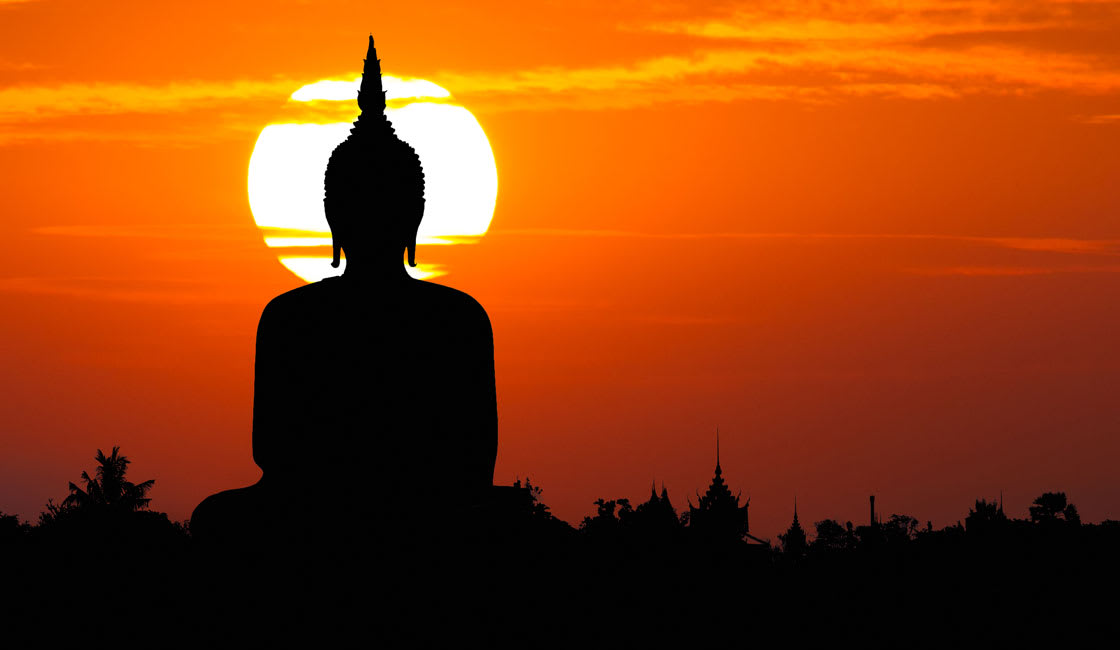
Thailand is one of the world’s top tourist destinations and a long-established favorite in Southeast Asia. From the steamy jungles and mist-shrouded mountains of the north, the mesmerizing capital and lush national parks in the central provinces to spectacular islands in the south, options are almost overwhelming for places to visit in Thailand. Luckily, this ‘Land of Smiles’ accommodates all tastes, be it honeymooners, families, hedonists or adventurers, and makes it all simple with a well-developed infrastructure and gracious hospitality. Here’s our ten best places to visit in Thailand.
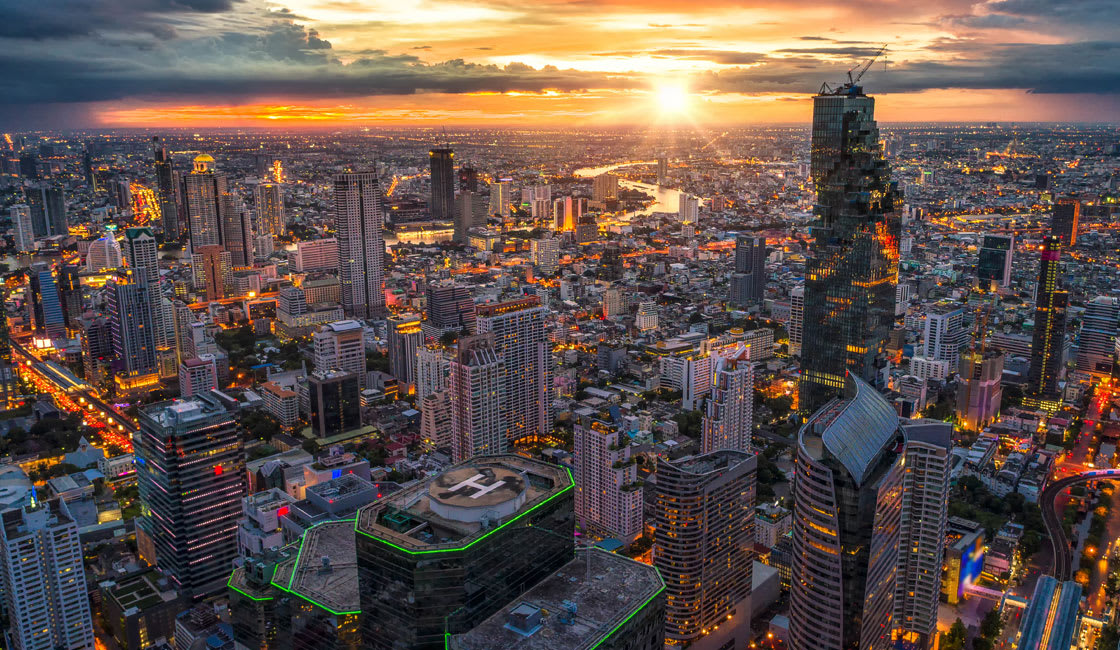
Far more than Thailand’s capital city and gateway for the rest of the country, Bangkok is a stand-out destination in its own right, acclaimed as one of the world’s most iconic, coolest and exciting cities on the planet. This ‘City of Angels’ displays a fine example of a thriving Southeast Asian metropolis seamlessly balancing the exotic Orient and contemporary western and tradition and modernity on its pulsating streets.
Dynamic Bangkok offers much to keep visitors occupied for days; don’t miss the magnificent Grand Palace, Chinatown and Jim Thompson’s teak house, along with golden Buddhist wats (temples) and boat rides on the historic Chao Phraya River. Bangkok is well-known for its staggering shopping options, from world-class glitzy malls to iconic floating markets, and as Asia’s food capital, its world-renowned street food.
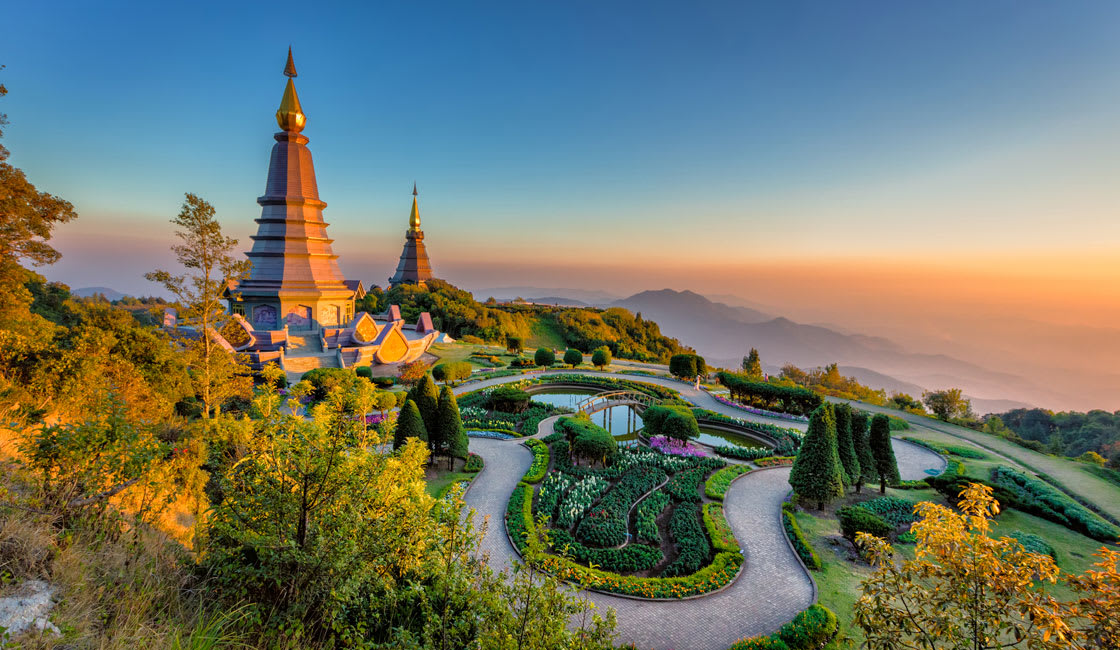
A sprawling modern city and ring of superhighways have grown-up around Chiang Mai, Thailand`s northern capital and second largest city. Yet set in a verdant river valley surrounded by forested mountains and with a historic central area, ever-popular Chiang Mai – or ‘Rose of the North’ – emanates a laid-back, provincial town feel.
The rich legacies of the former seat of the ancient Lanna Kingdom are still evident today, especially in the walled Old City, a wonderful place to explore on foot, with its dozens of stunning Buddhist temples, alongside modern-day quaint shops and cafés.
Don’t miss Chiang Mai’s night markets and bazaars, allegedly the best in Thailand and offering a unique retail experience, focused on locally-made ethnic handicrafts. Chiang Mai also boasts a vibrant food scene, with acclaimed northern Thai delicacies. The lush countryside and national parks beyond entice with more distractions: Wat Phra That Suthep, one of Thailand’s holiest Buddhist sites, atop Doi Suthep Mountain, besides waterfalls and elephant sanctuaries.
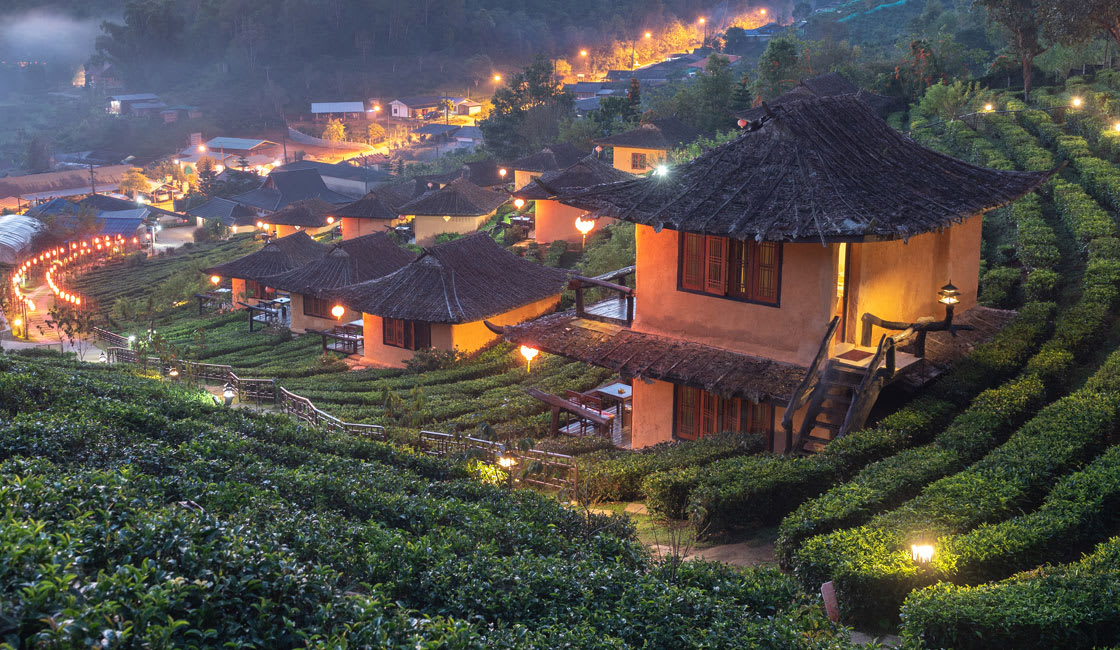
Thailand is arguably best known as a world-class beach destination, however, its mountainous regions are also home to equally breathtaking scenery.
This is especially true for the remote upper north-western region and Mae Hong Son, Thailand’s most mountainous province, distinctive for its mountains covered with dense rainforests and mists and pristine countryside rich with flora and fauna. Accessed from Chiang Mai (228 miles to the south), isolated Mae Hong Son Province offers an unspoilt destination for those in search of serenity far from the crowds.
Bordering Myanmar, Mae Hong Son displays more similarities with neighboring Burmese states than other Thai provinces, revealed in the architecture and traditional, indigenous ethnic groups who reside here, notably, Padong (‘Long-neck Karen’). Visitors will enjoy the chance to get back to nature, with outdoor pursuits that cover rafting and trekking to hill tribe villages. Hemmed in by mountains, provincial capital, Mae Hong Son and equally charming Pai both make delightfully relaxed bases, supplying plenty of Buddhist temples, ethnic markets and cultural attractions.
Thailand’s uppermost north-eastern region, Chiang Rai Province, is equally enthralling and remote; again, distinctive for its steamy jungles and mist-shrouded mountains, but also where the legendary Golden Triangle (Sop Ruak) is located – the point where two rivers and the borders of Thailand, Myanmar and Laos all converge. At special look-out towers, enjoy spectacular views across the three countries.
Once infamous as one of the world’s most prolific opium producers, this naturally beautiful and peaceful region has evolved as a popular tourist destination. Here you can visit the acclaimed ‘Hall of Opium,’ spot wildlife amongst the rainforests and stay overnight in homestays in traditional hill-tribe villages. Longtail boat trips along jungle-engulfed rivers voyage deep into the depths of the Golden Triangle.
Provincial city Chiang Rai makes a perfect base for this region. Founded in the 13th century and one of Thailand’s oldest settlements, Chiang Rai, like its sister city, was the former capital of the ancient Lanna Kingdom. Today, Thailand’s northernmost major city still retains a strong Lanna identity and cultural heritage and compared to Chiang Mai, is less touristed with a more relaxed vibe.
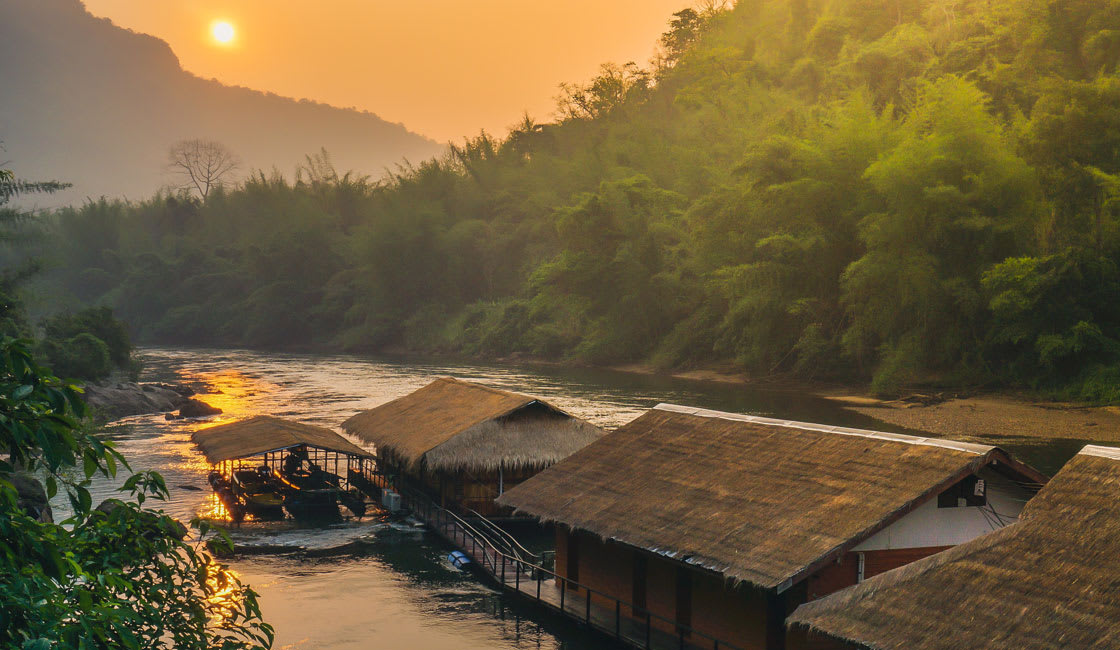
In Thailand’s western regions, Kanchanaburi is most synonymous with the infamous ‘Bridge over the River Kwai’ and strategic Thai-Burmese ‘Death Railway,’ built by Allied Prisoners of War during World War II. Although a haunting spot, Kanchanaburi is essential on any Thailand itinerary. Today, it’s possible to walk across the river bridge and take the slow train from Kanchanaburi over the River Kwai to Nam Tok – a scenic and popular ride – along the original railway tracks.
In Kanchanaburi, (`City of Gold’) several historic sites and museums commemorate the World War II tragic events, however, the surrounding province is also worth visiting for its lush forests, mountainous countryside and diverse wildlife that covers wild elephants. This all-natural setting is perfect for outdoor pursuits, including hiking, mountain biking, rafting and river cruising, stopping-off at sacred cave-temples, Khmer ruins and hot springs.
National parks in the vicinity include the popular Erawan National Park, home of some of the region’s most dramatic waterfalls and star attraction, stunning Erawan Falls. Cascading over seven tiers amidst dense rainforest, the emerald-green pools making a refreshing spot for a swim.

Off Thailand’s southwest coastline, the breath-taking Andaman Sea is justifiably opular for its picturesque bays, beaches and cluster of dazzling islands. An hour by plane from Bangkok and the largest of Thailand’s many islands, Phuket Island ranks as one of the world’s top beach destinations. Aptly labelled the ‘Pearl of the Andaman Sea,’ this naturally beautiful, mountainous island makes a blissful tropical playground accommodating all types and an excellent choice for those seeking an all-round vacation combining beach life, great dining and entertainment and convenient infrastructure and transportation (including an international airport). Phuket is not the place for anyone seeking solitude.
Phuket’s 30-plus gorgeous beaches are generally a postcard-perfect template of palm-fringed fine white sands and transparent azure waters, supplying abundant water sports, top-class resorts and amazing sunsets. The diversity of beaches cater to all tastes, but the most popular is Patong, its beachfront bars and clubs boasting the liveliest of Phuket’s legendary nightlife.
Aside from the idyllic beach life, plenty of other distractions run from shopping malls and theme parks to Chinese temples and night markets. Don’t miss the underrated historic Old Town, brimming with Sino-Portuguese cultural heritage and centuries-old shophouses. Phuket is additionally a popular launchpad for world-class diving sites and other stunning islands in the surrounding Andaman Sea.
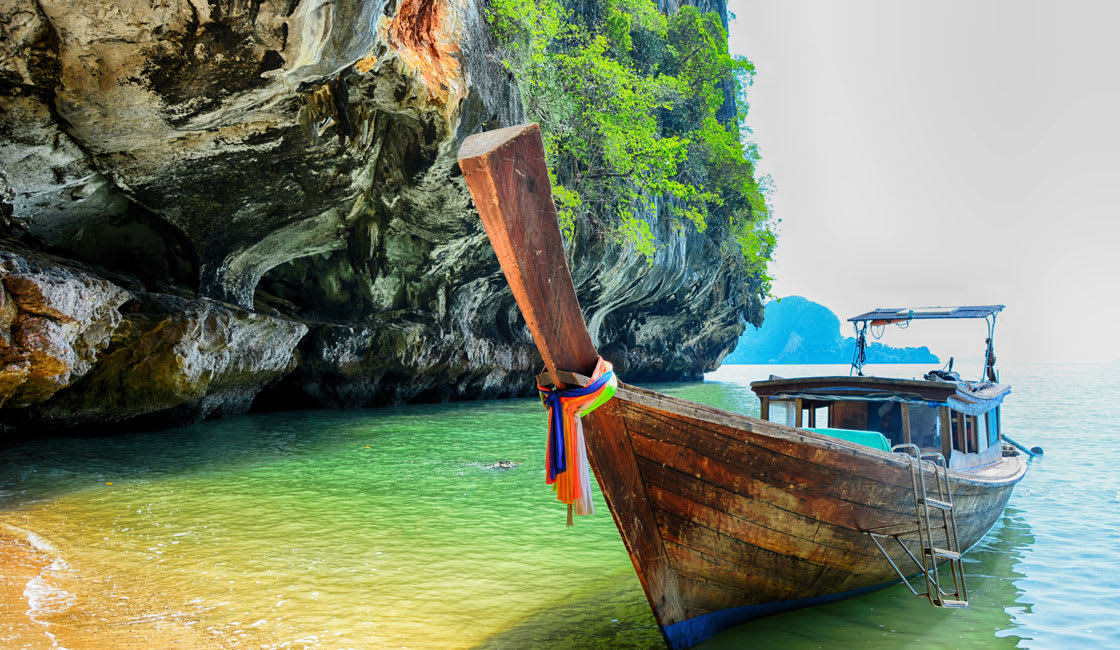
Another of the Andaman Sea’s major drawcards is Phang Nga Bay; located northeast of Phuket, one of Thailand’s top tourist attractions and most naturally scenic areas, instantly recognizable for its sheer limestone karsts and towering cliffs that jut out of emerald-green waters.
Protected by a marine national park, with calm, shallow waters and clear conditions, Phang Nga Bay is perfect for boating. Hop aboard a local-style longtail boat or cruiser and leisurely glide amongst these mostly inhabited, peculiar-shaped islets, which reveal hidden caves, lagoons and white sand coves. Snorkel amongst the colorful tropical fish, or sea kayak to access hidden ‘hongs’ – collapsed cave systems open to the sky, rich in flora and fauna – and aquatic grottoes.
An absolute must-see is, ‘James Bond Island,’ so-called after featuring in the Bond movie, The Man with the Golden Gun. With its iconic, top heavy formation, this rocky pinnacle is a much-photographed natural wonder, as is the surrounding ethereal water world. Amongst the few inhabited islands, stop off at Koh Panyee, a Muslim fishing village built over the sea on stilts. for a fresh seafood lunch, or the less touristy Koh Maak, a small community of fisherfolk who maintain a still traditional way of life.
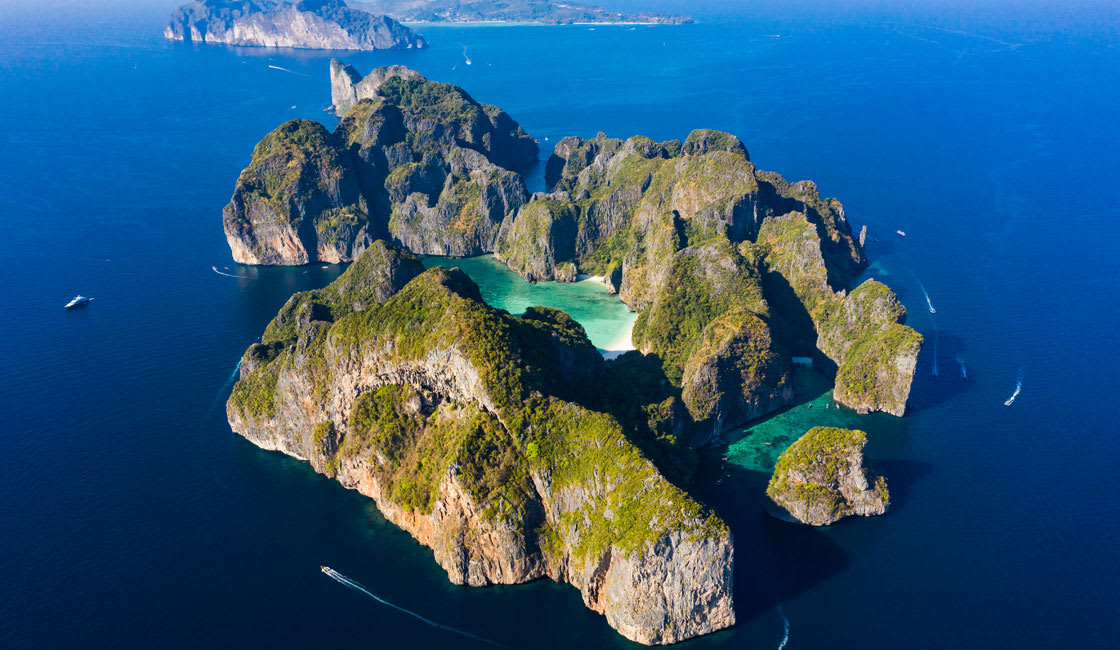
Still in the Andaman Sea, nearby Krabi Province presents another ultimate tropical getaway – home to some of Thailand’s most world-famous beaches and spectacular islands. Naturally beautiful Koh Phi Phi is a mini-archipelago of six islands, iconic for its spectacular limestone karsts and cliffs, rock formations and some of Southeast Asia’s most stunning, powdery white sand beaches, sandwiched between lush tropical vegetation and azure waters teeming with marine life.
Considered one of Thailand’s most beautiful beaches, Maya Bay gained world-wide popularity after featuring in the movie, The Beach, and its shallow bay is a favorite for snorkelers. Koh Phi Phi boasts a slew of dive sites for all levels and chance to spot leopard sharks, manta rays and deep coral reefs. These islands are best explored by boat and sea kayak, or better still, with a stay overnight on Phi Phi Don, the larger of the two main islands.
One of Thailand’s most sought-after destinations, Railay Beach is a small peninsula, with four neighboring white sand beaches within walking distance. Cut-off from the mainland by massive limestone cliffs, this remote tropical paradise is only accessible by longtail boat, and reveals a tranquil and extraordinary scene of beauty, barely developed and traffic-free. Railay has also evolved as Thailand’s top rock climbing location.
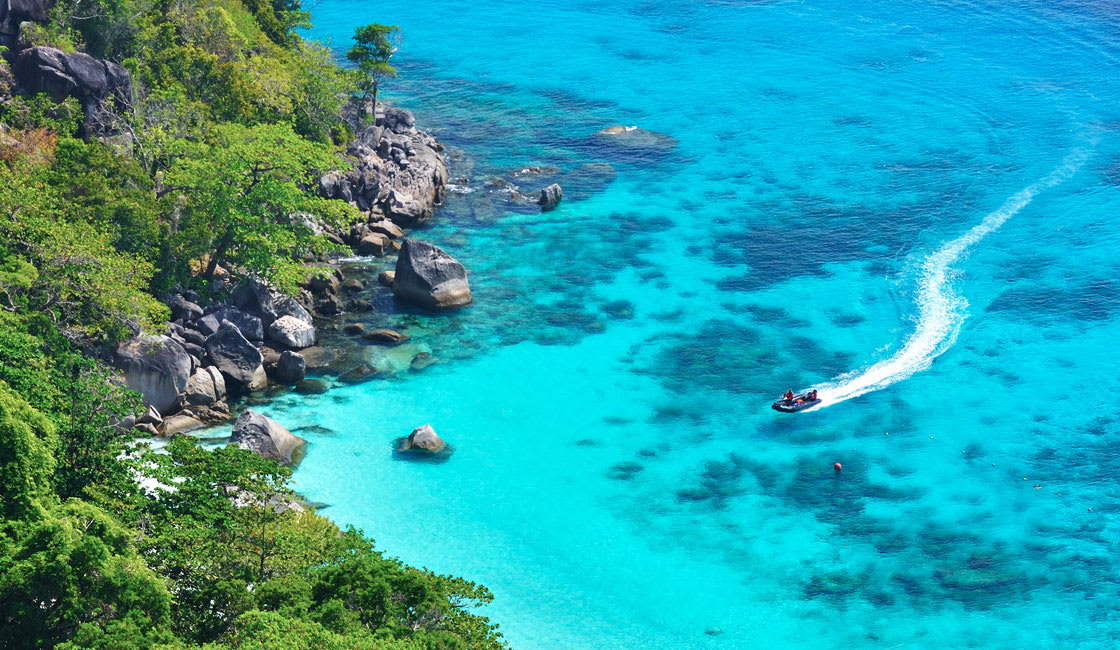
Although embedded in the well-frequented Andaman Sea, the lesser known Similan Islands, further north of Phang Nga Bay, is a world away from the crowds; a remote mini-archipelago that offers a fantastical underwater playground and ranked amongst the planet’s top ten dive destinations. Protected by a marine national park and a ban on tourism development, totally unspoilt Similan Islands boasts some of the most spectacular coral growths on earth and the greatest profusion of reef fish in Thai waters, along with exceptional underwater visibility and pristine waters.
Top diving sites like Koh Bon Island are home to incredible manta rays, multi-colored soft corals and underwater stone pinnacles, while the virtually pristine aquatic life offers exquisite snorkeling. Above water is equally impressive: a rare unspoilt territory of deserted white coral-sand beaches and native bird species. Only accessible between October and May, these sublime ic islands are increasingly popular as a hot new destination for the sailing fraternity and day trippers from Phuket, so get here soon!
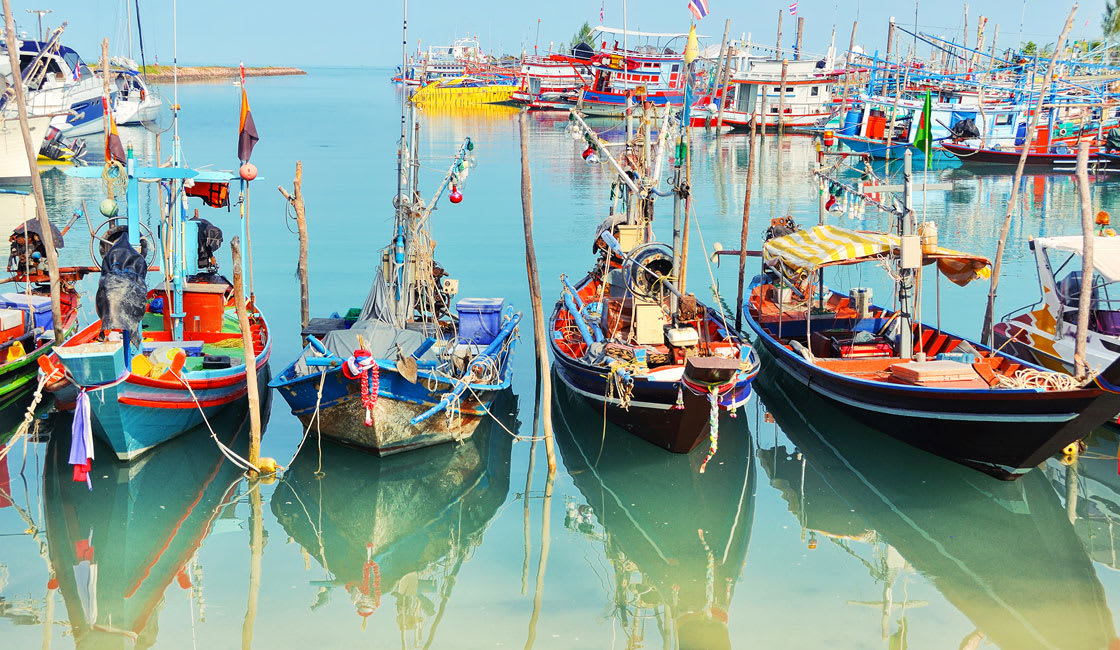
More slices of paradise can be found east across the country, in the Gulf of Thailand, namely, Koh Samui, the nation’s largest island and among Southeast Asia’s top vacation destinations. This quintessential tropical island has been popular for decades for its idyllic, palm-fringed beaches right around the coastline and rugged interiors covered in coconut groves and rainforest.
Accessible by flights from the mainland and with an international airport, Koh Samui has long been on Thailand’s well-trodden tourist trail and can get crowded in parts. However, first-timers to Thailand will appreciate how easy things are here, with well-established tourist facilities and infrastructure and world-class resorts. Koh Samui is also one of Asia’s top honeymoon hotspots and a favorite with couples.
Besides the fantastic beach life, water sports and premier diving in nearby Ang Thong Marine National Park, there’s plenty to keep everyone entertained, from sunset cruises and spa treatments to an annual sailing regatta and nightspots on Chaweng beach.
While Rainforest Cruises aim to provide accurate and up-to-date information, we make no representations as to the accuracy or completeness of any information herein or found by following any link on this site. Rainforest Cruises cannot and will not accept responsibility for any omissions or inaccuracies, or for any consequences arising therefrom, including any losses, injuries, or damages resulting from the display or use of this information.




